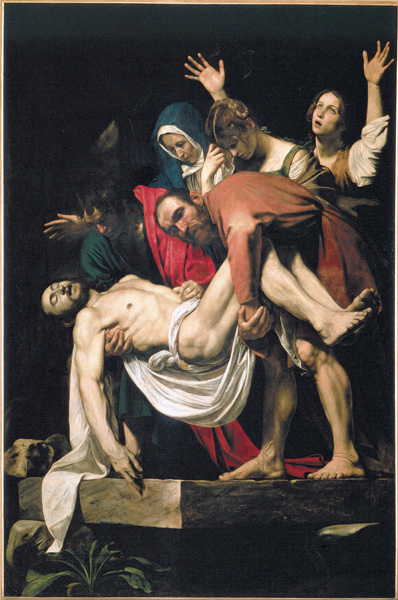Image Details

Collection Pinacoteca, Vatican Museums/Scala/Art Resource, NY
The women weep as Joseph of Arimathea and Nicodemus hastily lower Jesus’ limp body from the cross and into a tomb, in this painting by Caravaggio (1573–1610). According to the Gospel of John, Jesus died just before the Passover holiday. Nicodemus and Joseph only had time to wrap the corpse in a shroud and leave it in a nearby tomb before the festival began at sundown (19:38–42). In the Synoptic Gospels, however, the Last Supper occurs on the first night of Passover and Jesus dies the next day, while the festival is underway. Many scholars have suggested that John rewrote history in order to have Jesus die just as the sacrificial lamb was being slaughtered for the Passover meal. But John’s chronology is in many ways more plausible historically than that in the Synoptics, which have Jesus arrested after the Last Supper and brought before the Sanhedrin, the Jewish high court, that same night. It is not only unlikely that the Sanhedrin would have been able to meet on such a holy night, it may also have been illegal, as is suggested by ancient Jewish law recorded in the Mishnah.
